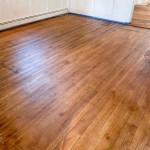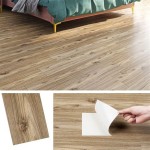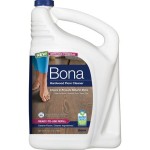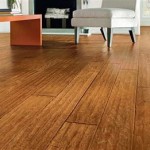Easiest Ways To Get Paint Off Wood Floor
Removing paint from wood floors can seem like a daunting task, but with the right tools and techniques, it can be efficiently achieved without causing permanent damage. The ease of paint removal often depends on factors such as the type of paint, the type of wood, the age of the paint, and whether the wood floor has a protective finish.
Several methods exist for removing paint from wood floors, ranging from gentle approaches suitable for delicate surfaces to more aggressive techniques for stubborn paint stains. Selecting the most appropriate method is crucial to preserving the integrity of the wood and achieving a satisfactory result. This article outlines several effective and relatively easy methods for removing paint from wood floors, emphasizing safety and minimizing potential damage.
Heat Gun Method
The heat gun method is a popular and effective way to soften paint, making it easier to scrape away. The principle behind this method is that heat softens the paint's bond with the wood surface, allowing for easier removal without excessive force. It is important to exercise caution when using a heat gun to avoid scorching the wood or causing a fire. Proper ventilation is also crucial, as heating old paint can release potentially harmful fumes.
Before beginning, gather the necessary materials: a heat gun, a metal scraper (preferably with rounded edges to prevent gouging), safety glasses, gloves, and a respirator mask. Ensure the area is well-ventilated by opening windows or using a fan. Begin by holding the heat gun several inches away from the painted surface, moving it slowly and consistently back and forth. Avoid focusing the heat on one spot for too long, as this can burn the wood. The paint will begin to soften and bubble as it heats up.
Once the paint is sufficiently softened, use the scraper to gently lift the paint away from the wood. Apply consistent, even pressure, and avoid digging the scraper into the wood. Work in small sections to ensure thorough paint removal and minimize the risk of damage. After scraping, some paint residue may remain. This can be addressed with subsequent methods, such as chemical strippers or sanding, depending on the extent of the residue.
It is vital to monitor the wood's temperature to prevent overheating. If the wood begins to darken or smoke, immediately move the heat gun away and allow the area to cool. Repeated heating and scraping may be necessary for thicker layers of paint. After completing the heat gun and scraping process, thoroughly clean the floor with a vacuum cleaner and a damp cloth to remove any remaining paint chips and debris.
Chemical Strippers
Chemical paint strippers offer another avenue for removing paint from wood floors. These products contain solvents that dissolve the bond between the paint and the wood surface. While effective, chemical strippers require careful handling and adherence to safety precautions. Different types of strippers are available, including those with more environmentally friendly formulations. Selecting the appropriate stripper depends on the type of paint and the desired level of efficacy.
Before using a chemical stripper, ensure adequate ventilation and wear appropriate personal protective equipment, including chemical-resistant gloves, safety glasses, and a respirator mask. Cover any adjacent surfaces that you do not want to be affected by the stripper with plastic sheeting or drop cloths. Apply a thick, even layer of the stripper to the painted surface, following the manufacturer's instructions regarding application method and dwell time. Dwell time refers to the amount of time the stripper needs to remain on the surface to effectively break down the paint.
Allow the stripper to sit for the recommended dwell time, which typically ranges from 15 minutes to several hours, depending on the product and the thickness of the paint. During this time, the stripper will penetrate and soften the paint. After the dwell time has elapsed, test a small area to see if the paint is ready to be removed. Use a scraper to gently lift the softened paint. If the paint comes off easily, proceed with removing the rest. If the paint is still resistant, allow the stripper to sit for a longer period.
Once the paint is softened, use a scraper to remove it from the wood floor. Work in small sections and apply consistent pressure to avoid gouging the wood. Multiple applications of the stripper may be necessary for particularly stubborn areas. After removing the paint, it is crucial to neutralize the stripper residue. Follow the manufacturer's instructions for neutralization, which may involve washing the floor with water or a specific neutralizing agent. Thoroughly rinse and dry the floor after neutralization to prevent any lingering chemical effects.
Sanding
Sanding is a more abrasive method of removing paint from wood floors, but it can be very effective for removing both paint and any remaining residue after using other methods. Sanding involves using abrasive materials to physically remove the paint layer by layer. It is essential to use appropriate grit sandpaper and sanding techniques to avoid damaging the wood. Sanding is often used in preparation for refinishing a wood floor, as it provides a smooth, even surface for applying new stain and protective coatings.
Prior to sanding, ensure that the area is clean and free of any loose debris or paint chips. Wear appropriate personal protective equipment, including safety glasses, a dust mask, and ear protection. Begin with a coarser grit sandpaper (e.g., 60-80 grit) to remove the bulk of the paint. Use a floor sander for large areas or a hand sander for smaller, more intricate areas. Apply consistent pressure and overlap each sanding pass to ensure uniform removal. Avoid staying in one spot for too long, as this can create dips or unevenness in the floor.
As the paint is removed, gradually switch to finer grit sandpaper (e.g., 100-120 grit) to smooth the surface and remove any scratches left by the coarser grit. Continue sanding until all the paint is removed and the floor is smooth and even. After sanding, thoroughly vacuum the floor to remove all sanding dust. Use a tack cloth to wipe the floor and remove any remaining fine dust particles.
Sanding can generate a significant amount of dust, so it is important to take measures to minimize dust exposure. Use a sander with a dust collection system, and seal off the work area with plastic sheeting to prevent dust from spreading to other parts of the house. Proper ventilation is also crucial. Sanding removes the existing finish on the wood floor, so it is necessary to refinish the floor after sanding to protect the wood and enhance its appearance. This typically involves applying stain and several coats of protective finish.
Choosing the "easiest" method depends largely on the characteristics of the paint and the floor itself. For thin layers of paint, a combination of gentle scraping and sanding might suffice. Thicker, more stubborn layers might necessitate the use of chemical strippers or the heat gun method. Regardless of the chosen method, patience, caution, and adherence to safety guidelines are paramount to achieving a satisfactory outcome without damaging the wood floor.
Before undertaking any of these methods on the entire floor, it is always recommended to test the chosen technique on a small, inconspicuous area to assess its effectiveness and potential impact on the wood. This allows for adjustments to be made before committing to the entire project, minimizing the risk of unintended damage.
Ultimately, the goal is to remove the paint while preserving the beauty and integrity of the wood floor. With the right approach and careful execution, restoring the floor to its original condition is an achievable endeavor.

How To Remove Paint Off Hardwood Floors Safely

Easily Remove Paint From Your Floors

Tested 10 Easy Ways To Get Paint Off Hardwood Floors Torera George

How To Get Paint Off Wood Floors Sawdust Girl

How To Remove Old Paint From A Wooden Floor Esb Flooring

Easily Remove Paint From Your Floors Youtube

Life On Elizabeth How To Remove Paint Splatter From Wood Floors

Easiest Ways To Clean Paint Stains From Your Hardwood Floors

Don S Room Progress How To Remove Paint From Wood Floors At Home With Ashley

How To Get Paint Off Wood Floors Sawdust Girl







